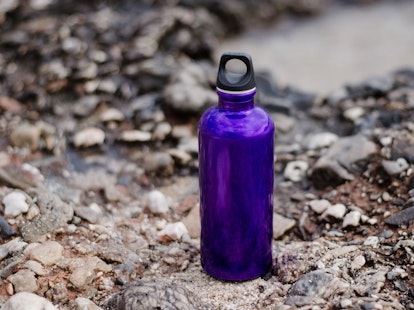The French General Directorate for Competition Policy, Consumer Affairs and Fraud Control published new recommendations for food contact materials made from metals and alloys. The recommendations took effect on 1 January, 2016.
In November 2015, the French Direction générale de la concurrence, de la consommation et de la répression des fraudes (DGCCRF, General Directorate for Competition Policy, Consumer Affairs and Fraud Control) published new recommendations for food contact materials (FCMs) made from metals and alloys. This recommendations document DM/4B/COM/001 [1] supersedes the specifications for metal and alloy FCMs falling under Information Notice No. 2004-64 [2] of 6 May, 2004.
The document DM/4B/COM/001 mandates the requirements for 14 types or classes of metal and alloy FCMs (Sections 1-9, Table 1). It also contains 4 Annexes to assist industry with the following:
- Requirements for the specific release of heavy metals (Annex I)
- Test conditions for the selection of simulants, temperature and time (Annex II)
- Definitions for carbides, cobalt alloys, copper alloys, high alloyed steels, magnesium alloys, nickel alloys as well as titanium and titanium alloys (Annex III)
- Specifications for heavy metal composition in (different types of) stainless steels (Annex IV)
According to the document, it does not cover the following:
- Enamelled materials
- Materials with an inorganic coating
- Materials with an organic-mineral hybrid coating such as sol-gels
The recommendations document DM/4B/COM/001 took effective on 1 January, 2016.
A summary of the FCMs covered by the new recommendations is given in Table 1. The requirements are detailed in the individual sections of the document.
Table 1
Document DM/4B/COM/001 Rules for metals and metal alloys intended to come into contact with foodstuffs | ||||
Section | Title | Section | Title | |
1 | Non-coated stainless steels | 6a | Cast iron without coating or with metallic coating | |
2a | Aluminium and aluminium alloys with organic coating | 6b | Cast iron with organic coating | |
2b | Aluminium and aluminium alloys without coating | 7 | Tin and tin alloys | |
3a | Steels without coating for packaging (‘Black Iron’) | 8 | Zinc and zinc alloys | |
3b | Tin-plated steels for packaging | 9 | Other metal articles with metallic coating | |
3c | Steels with organic coating for packaging | Appendix I | Specific release of heavy metals | |
4 | Steels without coating not for packaging | Appendix II | Test conditions (simulants, temperature and time) | |
5a | Steels and stainless steels with metallic coating not for packaging | Appendix III | Definitions of metals and alloys not covered by preceding sections in the document | |
5b | Steels and stainless steels with organic coating not for packaging | Appendix IV | Specifications for stainless steels | |
Effective date:1 January, 2016 | ||||
SGS technical experts have extensive knowledge and testing experience in materials and articles in contact with food. They work to ensure that your products meet the appropriate regulations for food contact materials and pave the way for compliance. From overall migration test to expert advices on emerging regulations and compliance issues and documentation review, SGS is the partner to trust. Please do not hesitate to contact us for further information or visit our website.
For enquiries, please contact:
Hing Wo Tsang
Global Hardlines
t: +852 2774 7420
Stay on top of regulatory changes within your industry: subscribe to SafeGuardS!
© SGS Group Management SA – 2016– All rights reserved - SGS is a registered trademark of SGS Group Management SA. This is a publication of SGS, except for 3rd parties’ contents submitted or licensed for use by SGS. SGS neither endorses nor disapproves said 3rd parties contents. This publication is intended to provide technical information and shall not be considered an exhaustive treatment of any subject treated. It is strictly educational and does not replace any legal requirements or applicable regulations. It is not intended to constitute consulting or professional advice. The information contained herein is provided “as is” and SGS does not warrant that it will be error-free or will meet any particular criteria of performance or quality. Do not quote or refer any information herein without SGS’s prior written consent.



